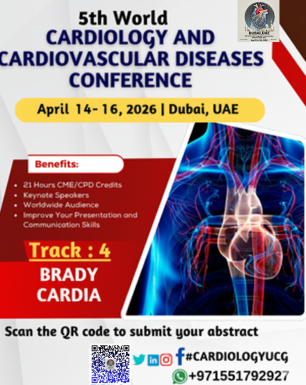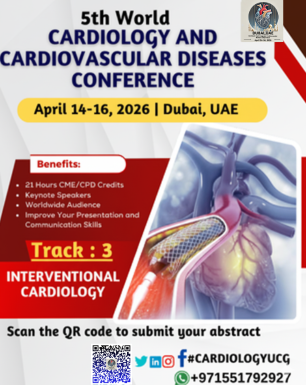Interventional cardiology guidelines are evidence-based recommendations designed to assist
healthcare providers in the diagnosis, treatment, and management of
cardiovascular diseases through catheter-based interventions. These guidelines
are developed by professional organizations like the American College of Cardiology (ACC), American
Heart Association (AHA), and European Society of Cardiology (ESC), based on clinical trials, expert consensus, and best
practices.
Below is an overview of some of the key
aspects of interventional cardiology guidelines: 1. General Principles
·
Patient
Selection:
- Interventions
should only be performed in patients where the potential benefits
outweigh the risks.
- Shared
decision-making should be emphasized, involving patients in treatment
choices.
·
Multidisciplinary
Team (Heart Team):
- Complex
cases (e.g., valve replacement, revascularization) should involve a
collaborative team of cardiologists, interventionalists, cardiac
surgeons, and other specialists.
·
Evidence-Based
Approach:
- Use
therapies and procedures supported by strong clinical evidence (graded
recommendations: Class I, IIa, IIb, III).
2. Guidelines for Coronary Artery Disease
(CAD)
Percutaneous Coronary
Intervention (PCI)
·
Indications for
PCI:
- Stable Angina: Reserved
for patients with significant symptoms despite optimal medical therapy or
for high-risk coronary anatomy.
- Acute Coronary Syndromes:
- Primary
PCI is the preferred treatment for ST-Elevation Myocardial Infarction (STEMI)
if performed within 120 minutes of first medical contact.
- In
Non-ST-Elevation Acute Coronary Syndromes
(NSTEMI), PCI is indicated for high-risk patients.
·
Pre-Procedural
Requirements:
- Dual
antiplatelet therapy (DAPT) initiation (e.g., aspirin +
clopidogrel/ticagrelor).
- Use
of fractional flow reserve (FFR) or intravascular imaging (e.g., IVUS,
OCT) for borderline lesions.
·
Post-Procedural
Care:
- Continuation
of DAPT (typically for 6–12 months, depending on stent type and patient
risk).
- Lifestyle
modification and risk factor management (e.g., lipid-lowering therapy,
hypertension control).
3. Guidelines for Structural Heart
Interventions
Aortic Valve Disease
- Transcatheter Aortic Valve Replacement
(TAVR):
- Indicated
for patients with severe
symptomatic aortic stenosis who are at
intermediate-to-high surgical risk.
- Shared
decision-making is crucial for choosing between TAVR and surgical aortic
valve replacement (SAVR).
Mitral Valve Disease
- Transcatheter Mitral Valve Repair (e.g.,
MitraClip):
- Indicated
in symptomatic patients with severe primary mitral regurgitation who are
at prohibitive surgical risk.
Congenital Heart Defects
- Closure
of atrial septal defects (ASD) or patent foramen ovale (PFO) is indicated
for:
- Prevention
of paradoxical embolism (e.g., cryptogenic stroke).
- Symptomatic
patients with significant left-to-right shunting.
4. Guidelines for Peripheral Artery
Disease (PAD)
·
Peripheral
Angioplasty and Stenting:
- Indicated
for symptomatic PAD, especially in cases of claudication or critical limb
ischemia.
- Pre-procedural
imaging (e.g., duplex ultrasound, CTA, MRA) is recommended to assess
lesion characteristics.
·
Carotid
Artery Stenting:
- Recommended
for patients at high risk for carotid endarterectomy (CEA) and with
symptomatic carotid artery stenosis ≥50%.
5. Guidelines for Antithrombotic Therapy
·
Dual
Antiplatelet Therapy (DAPT):
- Standard
for patients undergoing PCI with stent implantation.
- Duration:
- Bare-metal stents (BMS):
Minimum 1 month.
- Drug-eluting stents (DES):
Minimum 6–12 months.
- High
bleeding risk: Consider shorter DAPT duration (1–3 months).
·
Anticoagulation:
- In
patients with atrial fibrillation undergoing PCI, combination therapy
with anticoagulants and antiplatelets may be needed.
6. Guidelines for Imaging-Guided
Interventions
·
Use intravascular
imaging (e.g., IVUS or OCT) in:
- Assessing
stent placement and optimization.
- Complex
lesions (e.g., left main disease, bifurcation lesions).
·
Fractional Flow
Reserve (FFR):
- Recommended
for evaluating the functional significance of intermediate coronary
lesions.
7. Guidelines for Device-Specific
Interventions
·
Pacemakers
and ICDs:
- Indications
for implantation include life-threatening arrhythmias, bradycardia, or
risk of sudden cardiac death (e.g., after myocardial infarction or in
heart failure).
·
Left
Atrial Appendage Occlusion:
- Recommended
for stroke prevention in atrial fibrillation patients contraindicated for
long-term anticoagulation.
8. Guidelines for Heart Failure and
Circulatory Support
·
Mechanical
Circulatory Support Devices:
- Intra-aortic
balloon pump (IABP) or Impella is recommended for patients in cardiogenic
shock.
·
Ventricular
Assist Devices (VADs):
- Indicated
for advanced heart failure as a bridge to transplantation or destination
therapy.
9. Procedural Safety and Training
- Interventional
procedures should be performed in accredited centers with expertise and adequate
resources.
- Operators
must meet competency requirements and undergo periodic training to stay
updated with advancements.
10. Innovations and Emerging Guidelines
- Bioresorbable Scaffolds:
- Use
is still being evaluated and is recommended only in select cases.
- Robotic PCI:
- Gaining
traction as an option for enhanced precision but not widely adopted yet.
Adapting Guidelines to Practice
These guidelines are not rigid protocols but
frameworks to guide decision-making. Treatment plans should be individualized
based on patient needs, risks, and preferences.
Let me know if you'd like details on specific
guidelines, procedures, or recommendations.




